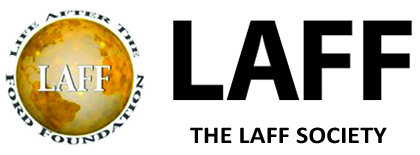CLIPPINGS
|
New Leader Overhauls Ford Foundation
The changes define the foundation's work and objectives more clearly, streamline its sprawling operations and place greater emphasis on demonstrating the impact of its programs.
“I think the upshot is that we will be beginning this next generation of work with a very clear sense of what we're trying to accomplish,” Mr. Ubiñas said in an interview in his office near the United Nations headquarters.
The foundation settled on eight issues, including access to education, natural resources and sustainable development, that will be its focus. It has worked in all of those areas in the past, but they were less clearly delineated.
Like many other iconic foundations, Ford has struggled to demonstrate the impact and relevance of its work over the last several years while attention and interest have been focused on newer foundations with living donors, like the Bill & Melinda Gates Foundation and the Case Foundation.
Those newer philanthropies experiment with the tools of giving, exercise rigorous assessment and analysis of their work, and are outspoken about successes and failures.
Mr. Ubiñas went to Ford in January of last year from McKinsey & Company, a consulting firm, without previous experience in institutional philanthropy, though he had worked with several nonprofit groups.
Whereas his predecessor, Susan V. Berresford, was the doyenne of the nonprofit world, Mr. Ubiñas has remained a cipher, traveling the world and talking quietly to people while he figured out a plan to make his mark.
During that time, the directors and program officers at Ford and in its offices around the world were asked to make a case for the work they were doing and to come up with ways to work more as teams.
Unlike many other foundations that overhaul their operations, Ford did not hire an outside consultant to run the process, instead relying on internal staff members and on Mr. Ubiñas's background as a consultant.
The overhaul will bring additional focus to what Ford calls “lines of work,” which are individual initiatives managed by individual program officers that have at times numbered more than 200, by condensing them into 35 new lines of work handled by groups of program officers around the world. Those teams will report to a director with responsibility for several of those 35 areas.
Thus, a single line of work devoted to advancing and supporting Native American arts and culture has been melded into a new, broader line of work supporting and promoting native, indigenous and minority contemporary artists.
Similarly, a line of work dedicated to expanding microfinance, which Ford pioneered, will morph into a broader effort to develop financial products like weather-based crop insurance and leasing of production equipment.
Ford also will put dollar figures on each of the eight issue areas, which will address longstanding criticism of the foundation's devotion to small grants.
For instance, Ford will commit “upwards of $30 million” to immigration over the next 18 months, a spokeswoman said. It might have committed a similar amount in the past, but the total would have been obscured by reporting of each grant made.
“Every one of these issue areas will involve a major investment of the size you can announce because each one requires a level of resources of that magnitude to have an impact,” Mr. Ubiñas said.
The reorganization has caused discomfort among foundation staff members whose distinct roles have been eliminated, but so far, Ford has not experienced an exodus and the overhaul has not included a staff reduction.
More changes may loom as a result of the current economic downturn.
Last year, Ford's assets fell 30 percent to $11 billion, yet it remains the country's second-largest foundation after the Gates Foundation. It has said it will increase its payout as a percentage of its assets this year and next.
Cutting costs last year produced $22 million that the foundation funneled into grants, and it is now in the midst of a second round of cost-cutting. “We'll do the same thing this time ' every last dollar we find internally will go into our grants budget,” Mr. Ubiñas said.
|
DISCLAIMER: The views expressed in these pages are the views of the authors and do not necessarily reflect the views of the LAFF Society.

